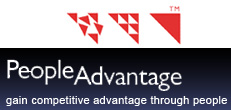Management literature constantly tells us that the quality of the people determine an organisation’s success. If this is true then the decline or failure of an organisation is due to a decline in the quality of its people.
This management maxim also means that the life cycle of an organisation is not inevitable ie start up, growth, maturation, decay. Because if an organisation implements effective people processes it can continue to attract, manage performance and retain high quality people and continue to be successful.
If an organisation fails to implement effective people processes, and particularly if it is growing, it will become over reliant on external recruitment. Since talented people are rare, this will result in the organisation having to compromise on talent to fill roles – this is particularly the case in the current environment of significant skill shortages.
The key to an organisation’s sustained success are effective people processes driven by rigorous and disciplined analytics.
Understand roles across the organisation
A rigorous disciplined analytical approach starts with getting a clear and comprehensive picture of what the roles look like across the organisation. This goes far beyond the traditional standard job description approach, particularly the classic one page wish list of duties.
For each role it is critical to understand:
- What needs to be achieved
- What achievement looks like
- How people need to perform to achieve objectives
- What psychological and knowledge resources people need
The only way that these factors can be clearly understood is by rigorously analysing the complexity embedded in each role.
Understand the interlocking career paths across the organisation
The interlocking horizontal and vertical career paths must be rigorously analysed to ensure:
- Critical task commonalities and differences between roles are identified
- Critical differences in complexity of roles are identified and career path steps properly reflect differences in complexity. This ensure sufficient remuneration incentive for people to want to progress in their career within the organisation
Providing a comprehensive picture of careers across the organisation encourages top performers to stay. Many of the top global CEOs stayed with the one company and eventually became the CEO because they had opportunities to perform in a diverse range of roles across a number of career paths within the company.
A disciplined and rigorous approach to the management of remuneration
This can only be achieved if there is a clear, comprehensive and valid picture of the roles across the organisation including differences in the complexity of the work across the roles. Without this picture the organisation will match apples with oranges rather than apples with apples when comparing remuneration with published remuneration surveys. Moreover unless there is a clear picture of the roles within the organisation it is impossible to identify roles in the published surveys that are poorly matched and therefore give an incorrect picture of actual pay levels in the market.
Develop disciplined and rigorous performance management and development processes
Unfortunately too many organisations treat performance management and development as yard work. Human Resources Managers are busy and under pressure from the CEO and senior executives to fix up pay and focus on compliance. In these circumstances performance management and development often gets perfunctory treatment. Forms are quickly developed and distributed, management is given minimal preparation and training and then the performance management/development system is implemented.
Not surprisingly the result is little or no change in performance levels and HR loses credibility.
A disciplined and rigorous approach requires:
- Position Descriptions to be prepared at the appropriate level of complexity
- Clear and agreed Key Result Areas and Performance Indicators
- A simple performance and development cycle which is understood by managers and staff.
- Performance feedback to be separated from performance appraisal for pay adjustment purposes
- Learning and development action plans to be developed and there is a direct line of sight from the complexity level of the role to the complexity level of the Learning and Development actions.
Sustained success is the result of the right kind of hard work. The keys outlined above will get you started on the path to an effective disciplined and rigorous analytical approach to people processes in your organisation.
Dallas Burgess
© PeopleAdvantage 2010 All rights reserved
.

